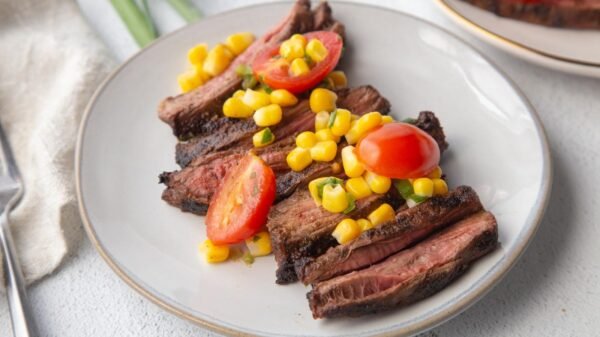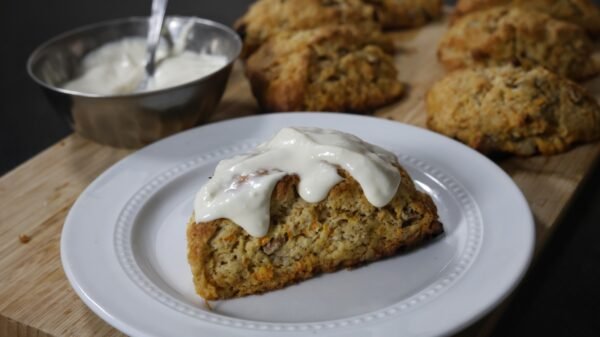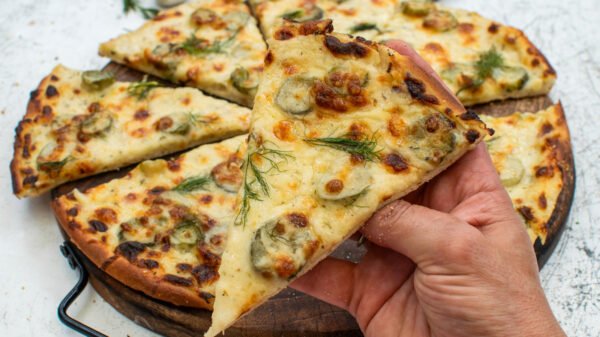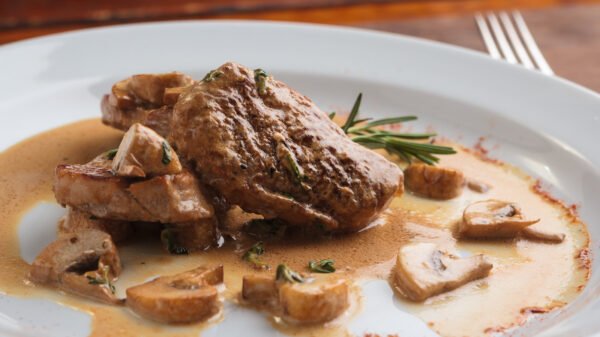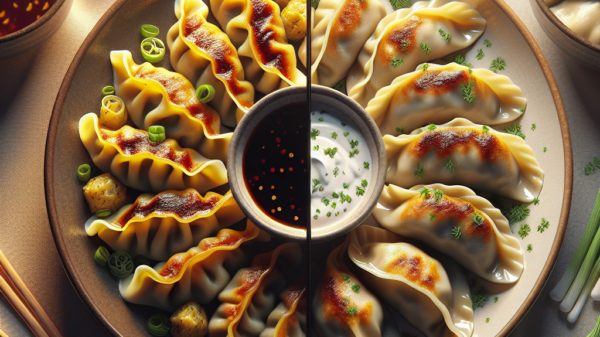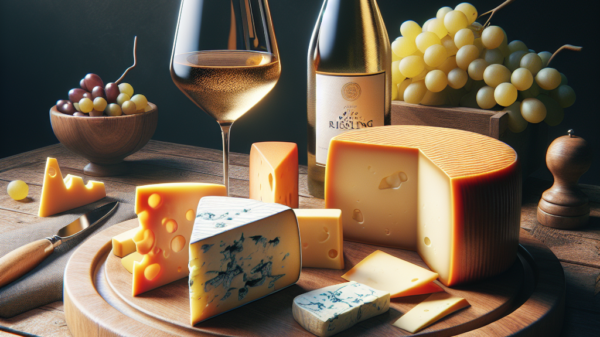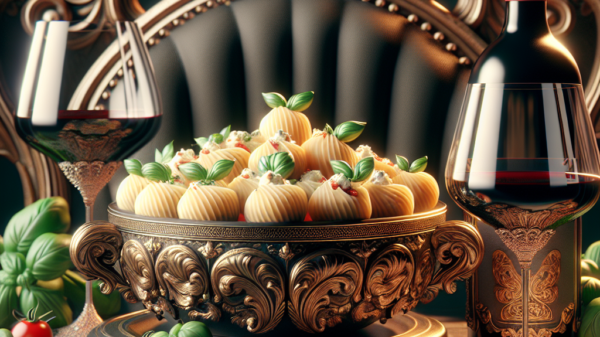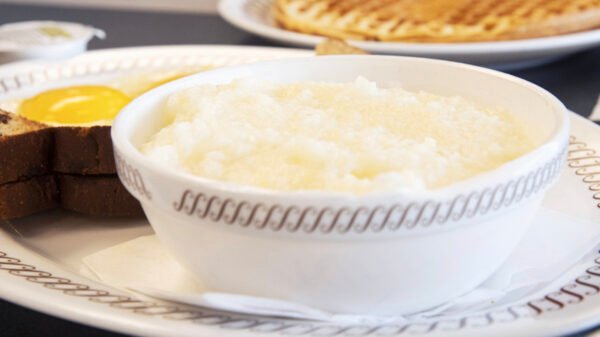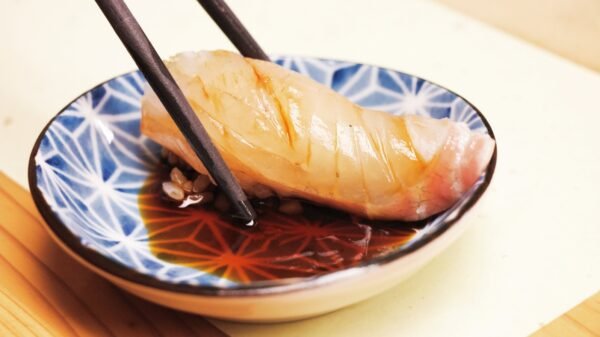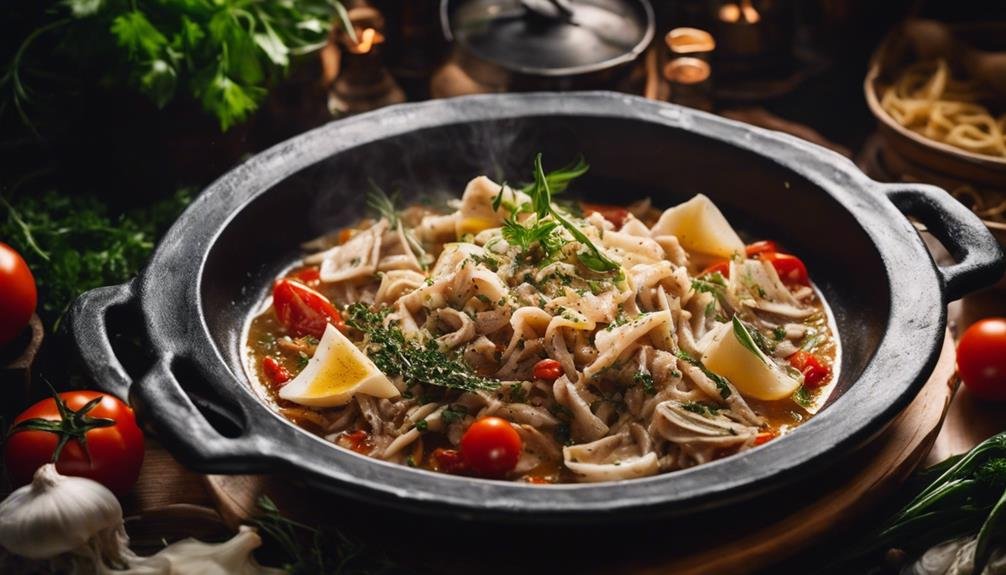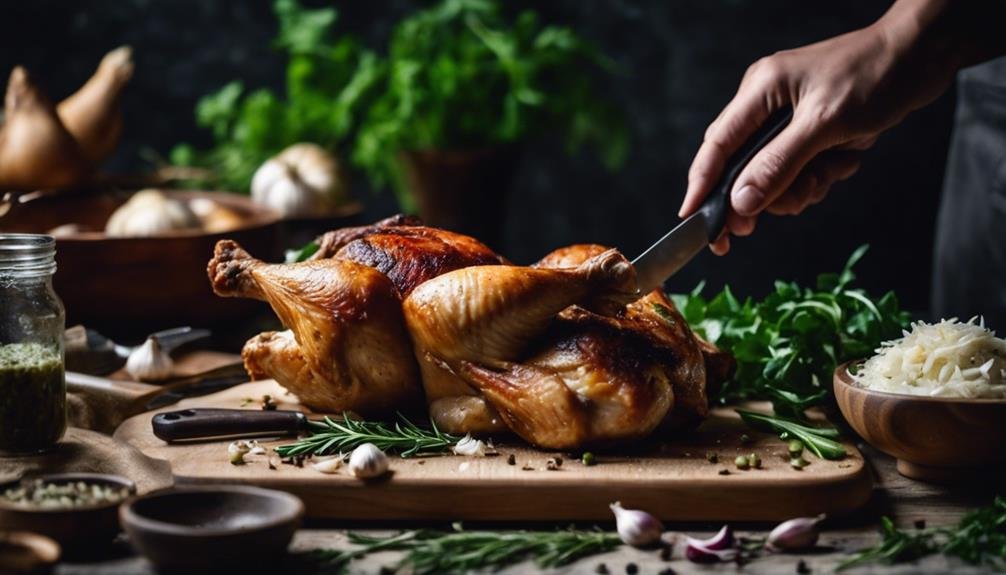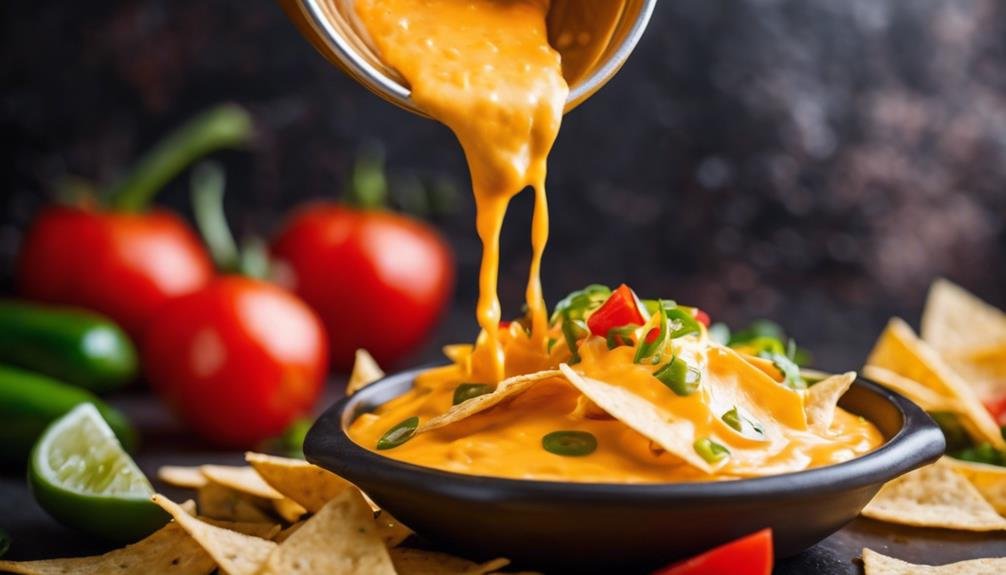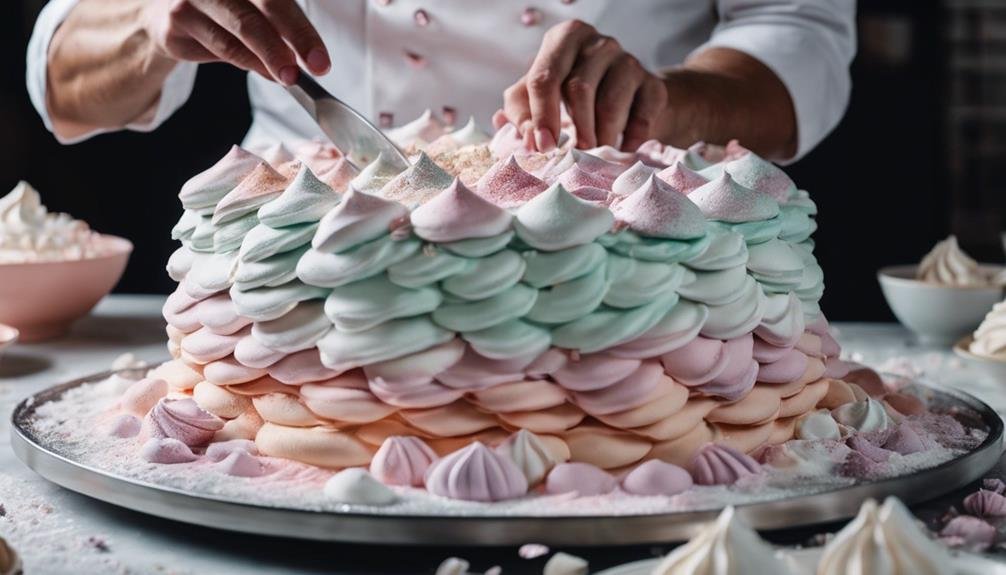Imagine the labyrinthine textures of tripe dancing on your taste buds, a culinary adventure not for the faint of heart. You’ve stumbled upon the elusive art of cooking tripe, an endeavor that combines the precision of a scientist with the notion of a poet.
You’re in for a treat, from selecting the choicest cuts to mastering the delicate balance of flavors that elevate this humble offal. Armed with vinegar soaks, slow-cooking secrets, and a dash of humor, you’ll navigate the intricacies of preparing dishes that resonate with cultural heritage and culinary innovation.
But why stop at merely imagining? Uncover the secrets to transforming this underdog ingredient into a gourmet delight.
Cooking Tripe Key Takeaways
- Select fresh tripe with a smooth, white texture and a mild scent for the best quality.
- Clean and prepare tripe by trimming, scrubbing with salt, rinsing with vinegar, and scraping to ensure purity and enhance flavor.
- Parboil tripe with salt for 10 minutes to remove impurities and odors, ensuring tender and flavorful results.
- Choose the right cutting and cooking method, such as grilling, stewing, or frying, to transform tripe into a culinary delight.
Selecting Quality Tripe
Choosing the right tripe is no trivial matter; you’ll want to opt for pieces that boast a fresh, smooth texture and emit a clean, almost inviting smell. Now, let’s plunge into the nitty-gritty of selecting the cream of the tripe crop, shall we? First off, give it a good, hard look. Your tripe should be the epitome of firmness, free from any slimy betrayals or discolored confessions of a less-than-ideal past. A tripe that’s too slick or speckled with dubious hues is broadcasting a culinary SOS.
Now, color me intrigued, but the hue of your tripe is also quite telling. You’re aiming for the haute couture of the tripe world: a chic white or creamy palette. This isn’t the place for unsightly fat masquerades or the garish tones of spoilage. And oh, the aroma! A fresh tripe doesn’t need to shout; its scent is discreet, with no hints of ammonia or the dark, intense whispers of decay.
Preparing and Cleaning
Armed with your pristine selection of tripe, let’s immerse into the meticulous yet gratifying process of preparing and cleaning, ensuring every piece is primed for culinary excellence. Should you accept it, your mission involves steps that might remind you of a lab experiment mixed with a pinch of culinary magic.
| Step | Description |
|---|---|
| Trim | Kick things off by bravely trimming away excess fat. This isn’t just about aesthetics but purity in flavor and texture. |
| Scrub | Deploy salt as your abrasive ally, rubbing it into the tripe with the determination of a scientist polishing a precious gem. |
| Rinse & Scrape | Here’s where things get zesty. Rinse with vinegar, then take a knife and, with the precision of a surgeon, scrape away any lingering impurities. |
Parboiling Techniques
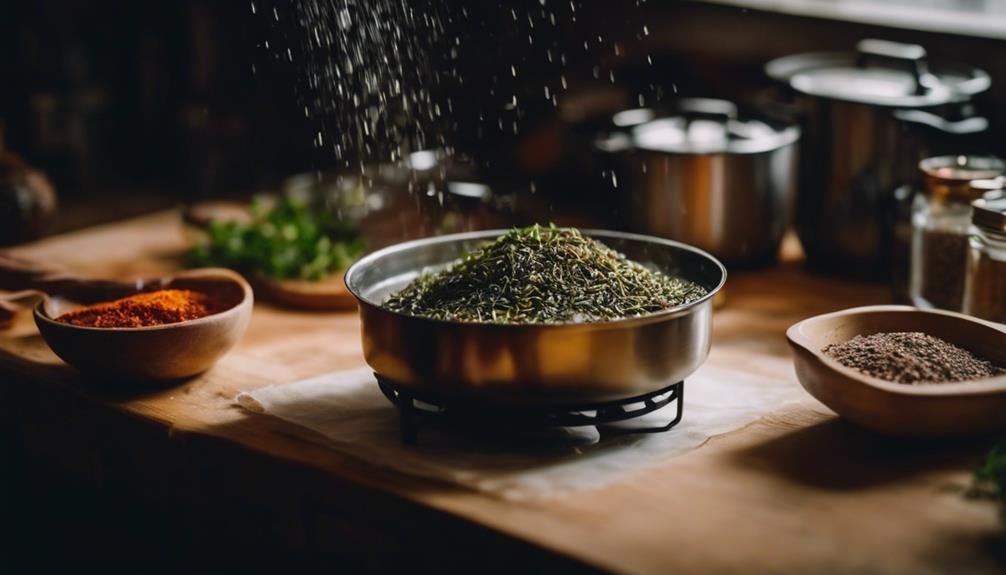
Having meticulously prepared your tripe, it’s time to tackle the parboiling stage. This method guarantees that your offal is clean and tender enough to rival even the most sophisticated cuts. Parboiling, my dear culinary adventurers, isn’t a mere dunk-and-done affair.
Oh no, it’s akin to a spa treatment for the tripe, involving a 10-minute simmer with a dash of salt. This isn’t just any salt bath, though. It’s a purifying ritual that strips away impurities, bidding farewell to any odors or flavors that might make your diners think twice.
But here’s the kicker: after this boiling bonanza, you must embrace the chill factor. Rinsing the tripe in cold water isn’t just about keeping it cool; it’s about locking in that freshness and ensuring the tripe doesn’t carry over any of the day’s stress. Think of it as the tripe’s ice bath after a marathon.
Mastering this step is crucial. It’s the difference between serving a merely edible dish and one that’ll have guests questioning their life choices for not trying tripe sooner. So, embrace the boil, respect the rinse, and prepare for culinary greatness.
Cutting and Portioning
Once your tripe has enjoyed its spa day via the parboiling process, it’s time to wield your knife with the precision of a surgeon, ensuring each cut and portion sets the stage for culinary magic. You’re not just slicing; you’re sculpting the future of a dish with tongues wagging and mouths watering. Remember, the way you cut and portion isn’t just about aesthetics; it’s science, art, and a bit of kitchen magic all rolled into one.
| Cut Type | Dish Example |
|---|---|
| Thin Strips | Stir-fry |
| Small Cubes | Stews |
| Large Squares | Grilling |
Cutting tripe after it’s been parboiled is like tailoring a suit; it must fit the occasion (or, in this case, the dish) perfectly. Proper portioning ensures every piece cooks evenly, perfectly tender and ready to soak up all those delicious flavors you’re about to introduce. Precision is key whether you’re aiming for thin strips that’ll sizzle in a stir-fry, small cubes that’ll meld into a hearty stew, or large squares destined for the grill. So, grab that knife and let’s transform this culinary underdog into the star of the show.
Cooking Methods and Tips
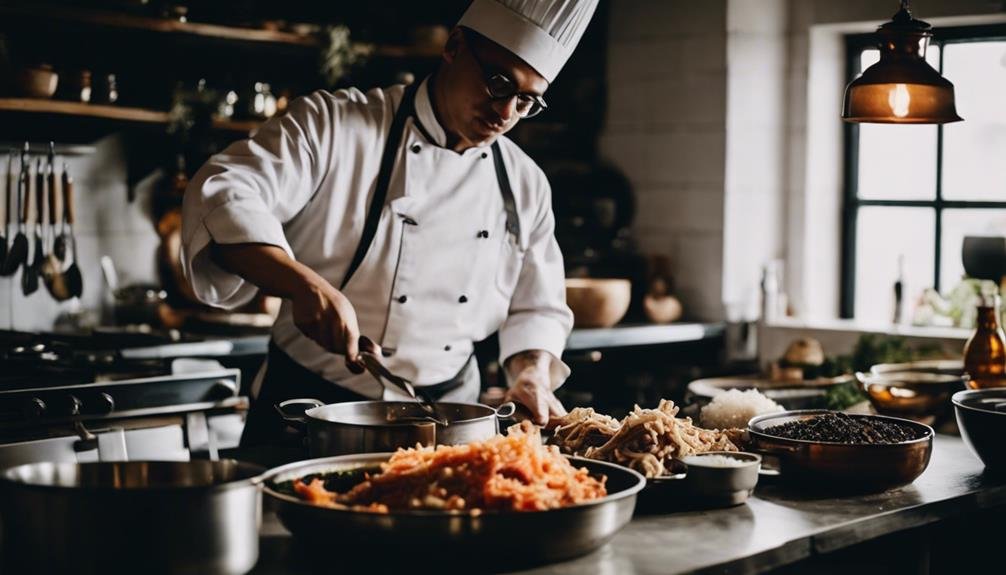
After mastering the art of tailoring your tripe to perfection, it’s time to initiate the culinary adventure of cooking it to achieve that melt-in-your-mouth masterpiece. First, let’s give it a spa day by parboiling it with a pinch of salt. Think of this as its detox phase: shed impurities and excess fat, prepping it for the spotlight in your culinary show.
Next, you’ll want to give it a good scrub-down. Imagine you’re a tripe beautician: trim off the fat, sprinkle salt like fairy dust, bathe it in vinegar, and then get scraping. It’s not just about cleanliness; it’s about preparing it for its debut.
Now, armed with your knife, transform your tripe into the shapes and sizes that make your dish a star. This isn’t just about cooking; it’s about crafting a masterpiece.
Whether you grill it to smoky perfection, stew it until it’s tender enough to whisper sweet nothings to your taste buds, fry it to a crisp delight, or let it play the lead role in your soups and stews, remember: the secret is in the preparation. And if all else fails, remember the soft toothbrush trick. It’s not just for teeth anymore.
Frequently Asked Questions
How Many Hours Does It Take to Cook Tripe?
Cooking tripe perfectly requires 2-3 hours, but certain recipes may require additional time. This process, which involves slowly boiling or braising over low heat, ensures the tripe becomes tender rather than chewy. The exact cooking time can vary depending on the type of tripe and the desired consistency of the dish.
Why Is Tripe so Tough?
Tripe is tough because it contains a high amount of collagen and is constantly used as a stomach lining. Slow cooking and proper preparation steps, such as cleaning and parboiling, are essential to making it tender. These efforts ensure a delicious outcome.
Do You Soak Tripe Before Cooking?
Yes, soaking tripe before cooking is recommended. This process helps eliminate the odor, tenderize the meat, and remove impurities, ensuring your dishes are more enjoyable for everyone. Leaving it to soak overnight is particularly effective.
What Is the Difference Between Tripe and Honeycomb Tripe?
Honeycomb and regular tripe differ primarily in their texture, appearance, and source within the cow’s stomach. Honeycomb tripe, specifically derived from the cow’s second stomach chamber, is characterized by its distinctive and visually appealing honeycomb-patterned texture. It is notably softer and adds a unique, gelatinous quality to dishes, unlike the more uniformly textured regular tripe, which lacks this pattern and tenderness.
Conclusion
Now that you’ve journeyed through the intricate world of tripe, armed with the art of selection, the precision of preparation, and the alchemy of cooking, you’re ready to conquer this culinary beast.
Remember, patience is key when dealing with the delicate dance of flavors and textures. Embrace the adventure of slow cooking and the magic of seasoning.
Let your kitchen become a laboratory of gastronomical experiments. Co—regulations, you’ve graduated from a tri novice to a bona fide offal aficionado.
Happy cooking!


